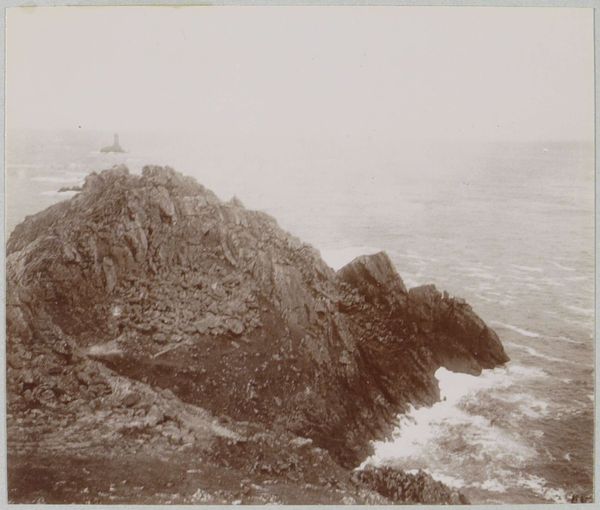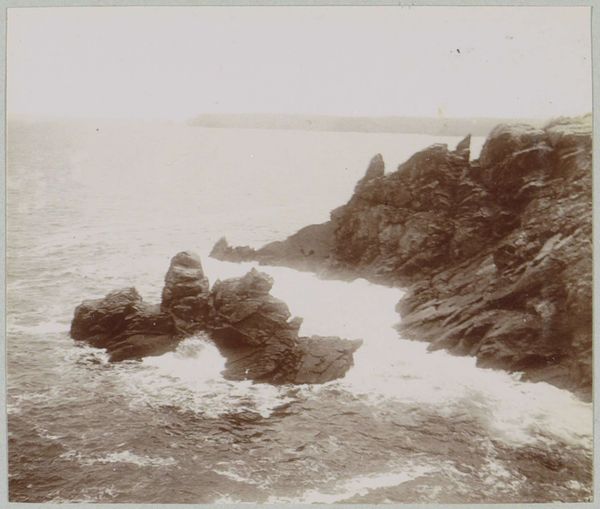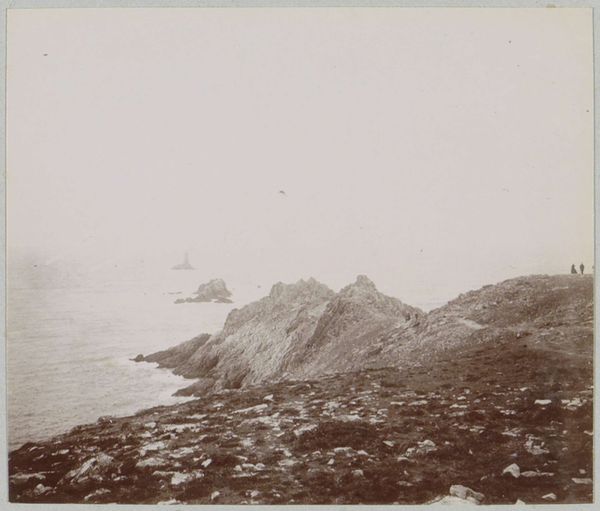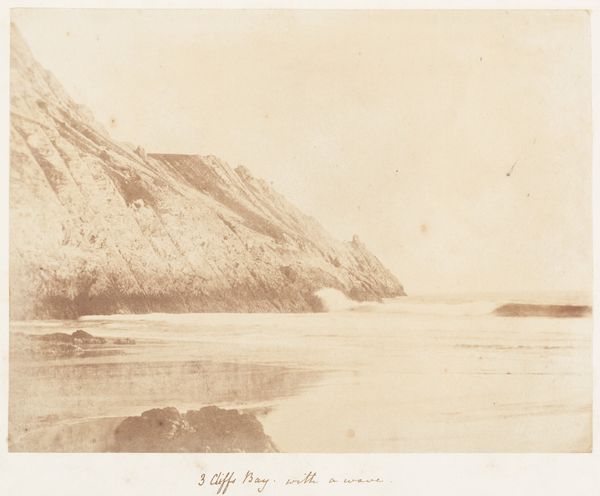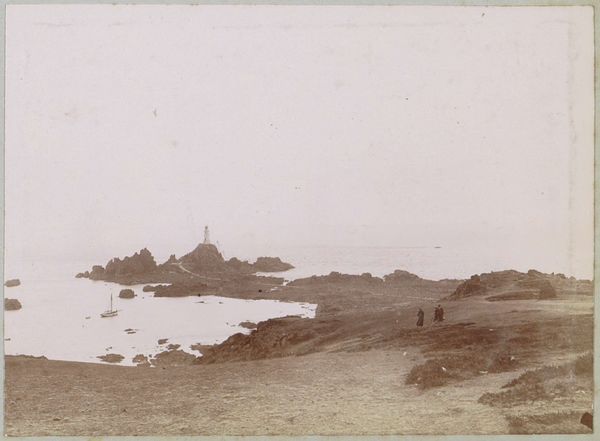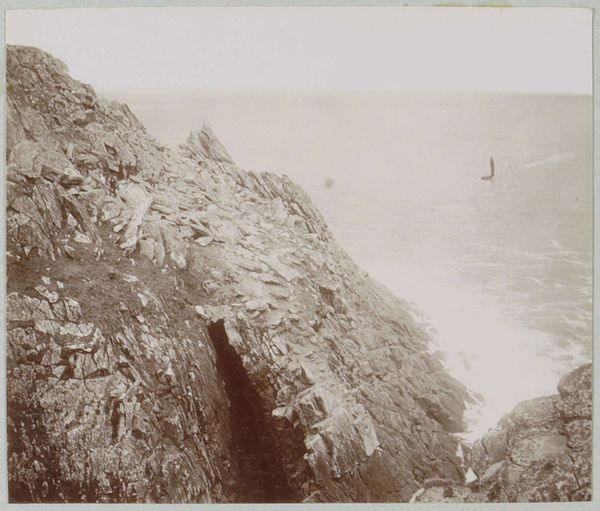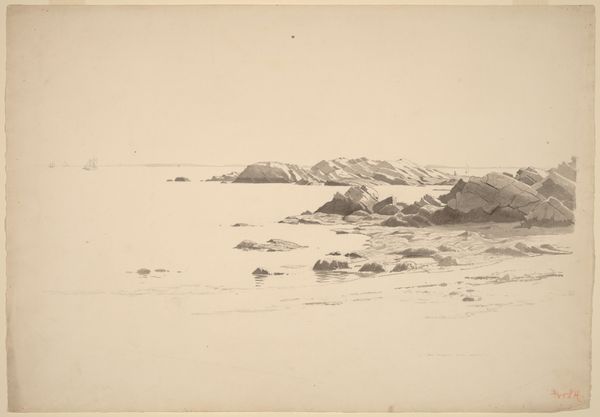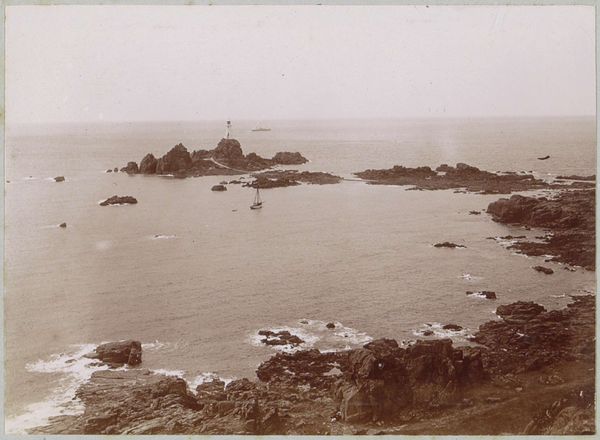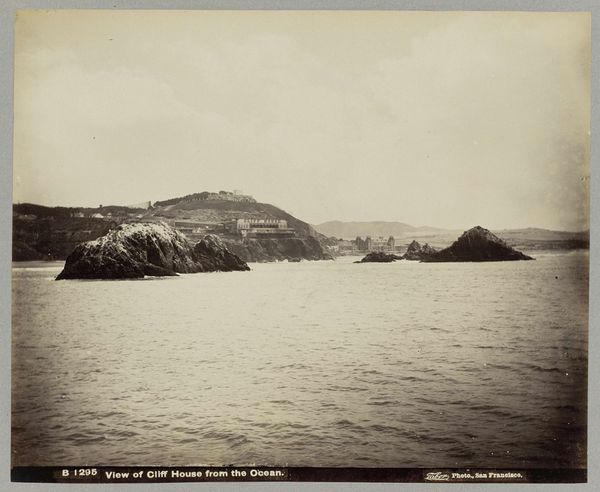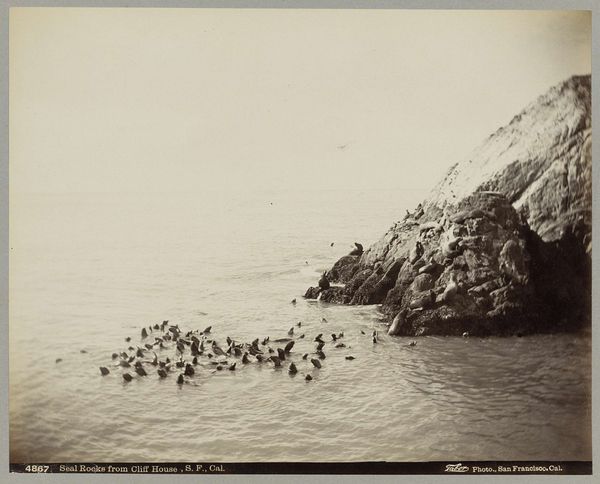
photography, gelatin-silver-print
#
landscape
#
photography
#
gelatin-silver-print
#
hudson-river-school
#
realism
#
sea
Copyright: Public Domain
Curator: This is Carleton Watkins' gelatin silver print, "Seal Rocks," created between 1868 and 1869. The scene before us captures a cluster of rocky outcroppings emerging from the sea, now held in the collection of the Metropolitan Museum. Editor: My immediate response is one of stark simplicity, perhaps a hint of romantic loneliness. The monochromatic tones really strip the scene to its core elements – rock, water, sky. It is all so neatly ordered. Curator: I am drawn to the composition. The arrangement of these geological forms, particularly the way their peaks ascend in an almost pyramid-like fashion, demonstrates an awareness of classical structure. Also the photograph invites consideration of man's place within the vastness of nature, resonating with ideas that fueled the Hudson River School movement. Editor: Exactly, and Watkins made this photograph as part of his larger project to document the American West. His work shaped perceptions of the land during a time of immense social and economic change fueled by western expansion, so these landscape photos had an almost political meaning when considering ideas like manifest destiny. Watkins offered an almost mythic perspective for viewers who couldn't venture westward themselves. Curator: Looking at the subtleties in the gelatin silver print, one notices how Watkins manages to capture the varied textures, from the roughness of the rocks to the fluid, almost cottony appearance of the water. Editor: The long exposure used to capture this level of detail lends the ocean that dreamy quality. By distributing and displaying photos such as "Seal Rocks", Watkins democratized landscape in the 19th century by capturing majestic scenes like these, making them available in private homes as consumer items, bringing western vistas from San Francisco into any Victorian parlor. Curator: Precisely. The careful calibration of light and shadow emphasizes form, almost revealing the elemental geometric nature inherent within the chaos of the natural world. This tension brings such depth to it. Editor: It also suggests how the very act of image-making can alter perceptions of a subject, whether natural or human. Food for thought regarding the camera and its influence on 19th-century audiences and even us today, wouldn’t you agree?
Comments
No comments
Be the first to comment and join the conversation on the ultimate creative platform.
